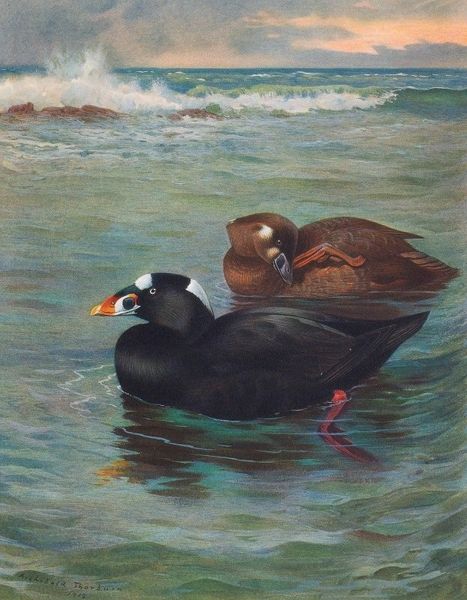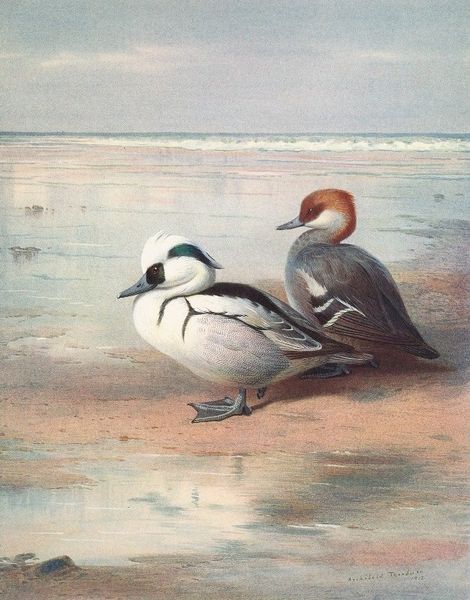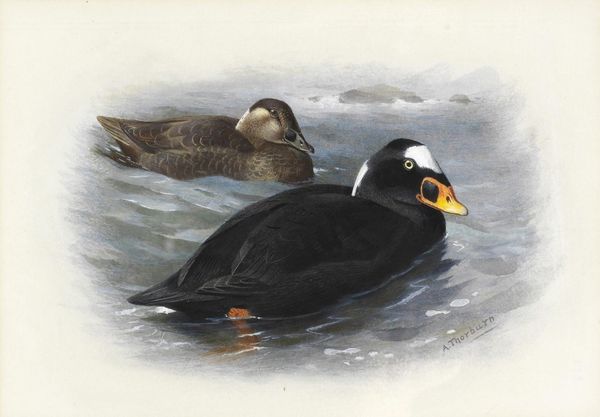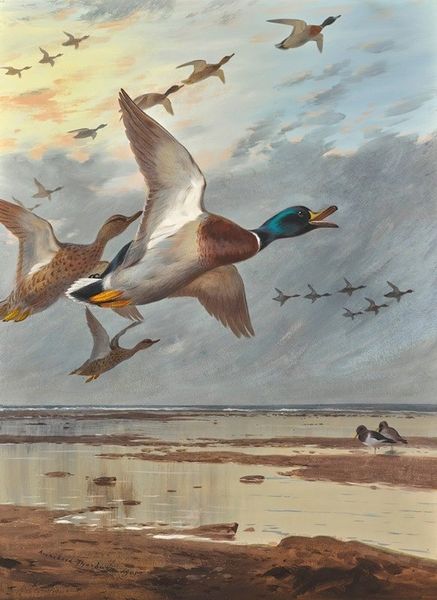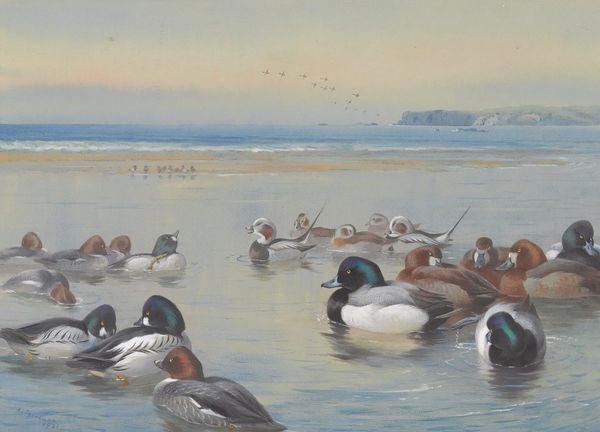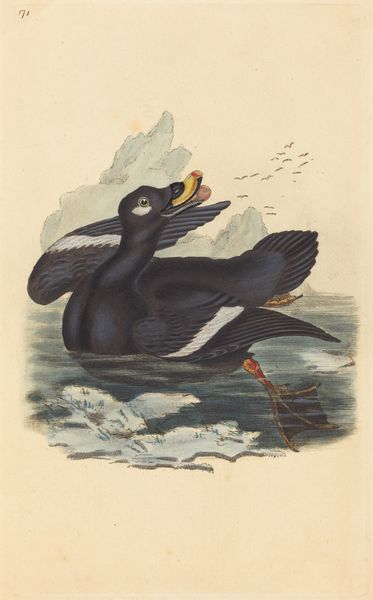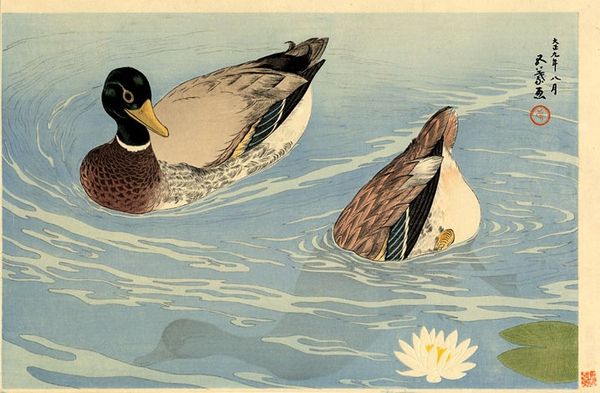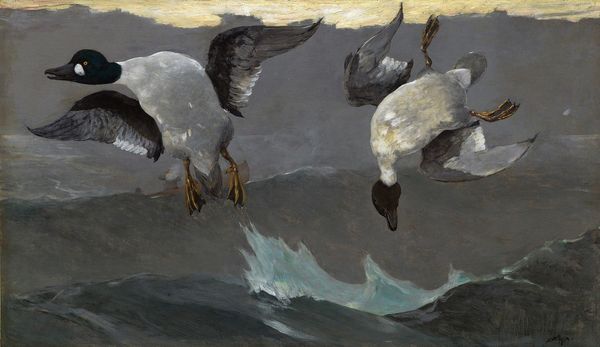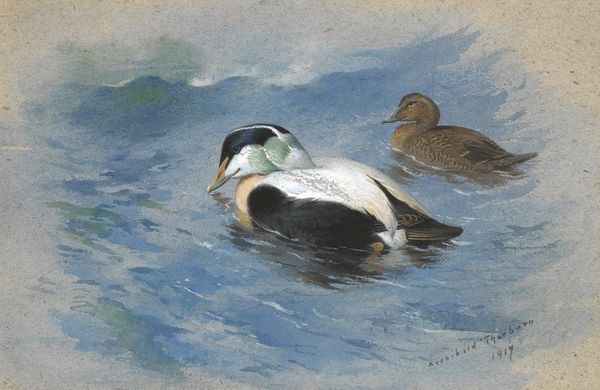
Copyright: Public Domain: Artvee
Archibald Thorburn painted this watercolor of Velvet Scoters during a time when naturalism in art was shifting toward more symbolic representations. The image depicts wildlife in a seemingly objective manner, but in the late 19th and early 20th centuries, such images played a crucial role in shaping public perceptions of the natural world. Thorburn's meticulous detail and scientific accuracy were highly valued, yet his work also reflects the growing conservation movement in Britain. This movement arose in response to industrialization and urbanization, which threatened wildlife habitats. The art institutions and publications that showcased Thorburn's work helped to promote a romanticized view of nature, influencing policies on wildlife protection and land use. By studying the illustrated books and journals of the time, one can better understand the complex relationship between art, science, and environmentalism in shaping modern attitudes toward nature.
Comments
No comments
Be the first to comment and join the conversation on the ultimate creative platform.
